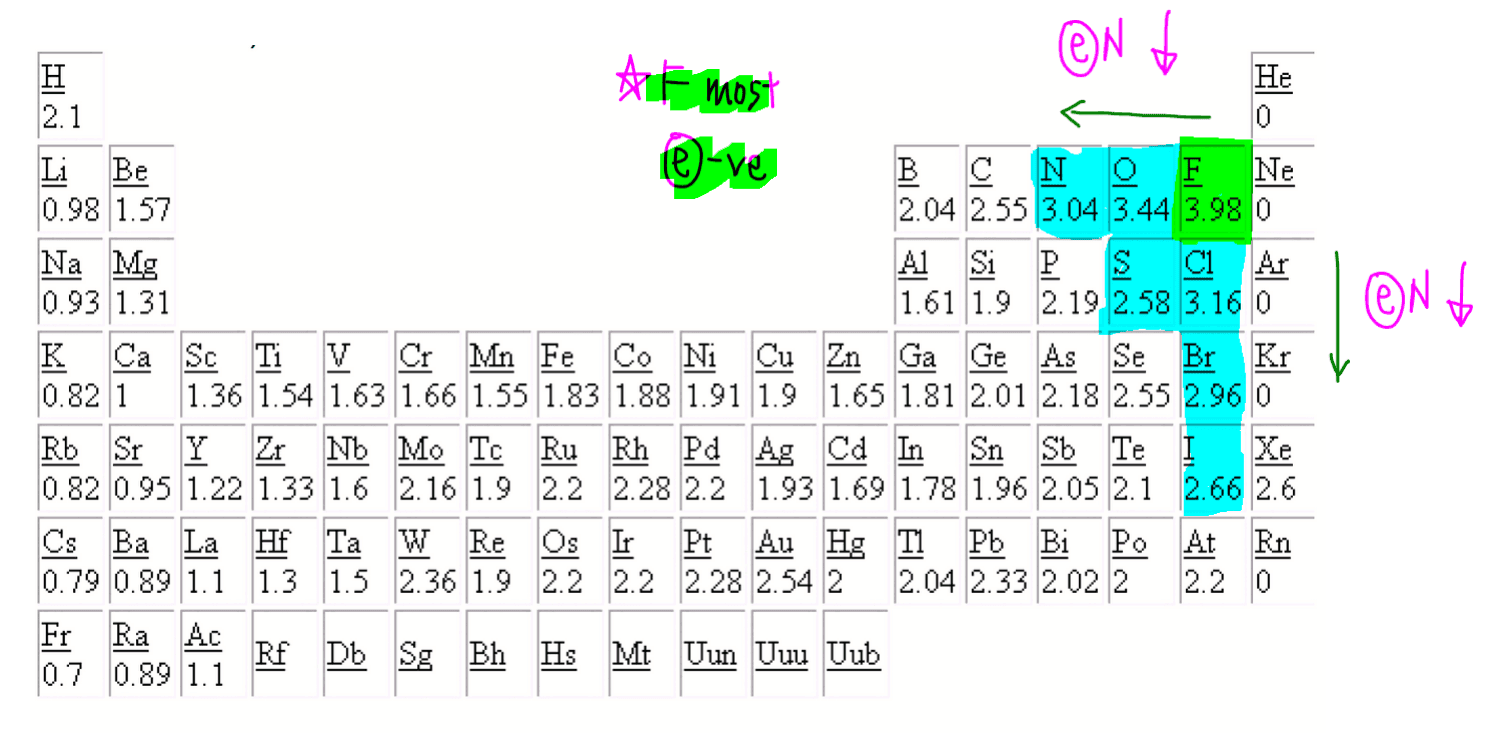
What is Oxidation State?
The oxidation number of a monatomic ion is equal to the charge on the ion. For example, the oxidation number of chlorine in the Cl - ion is -1. The oxidation number of bromine in the Br - ion is -1. The oxidation number of sodium in the Na + ion is +1. Some atoms have several possible oxidation numbers. For example, iron can be Fe +2 or Fe +3.
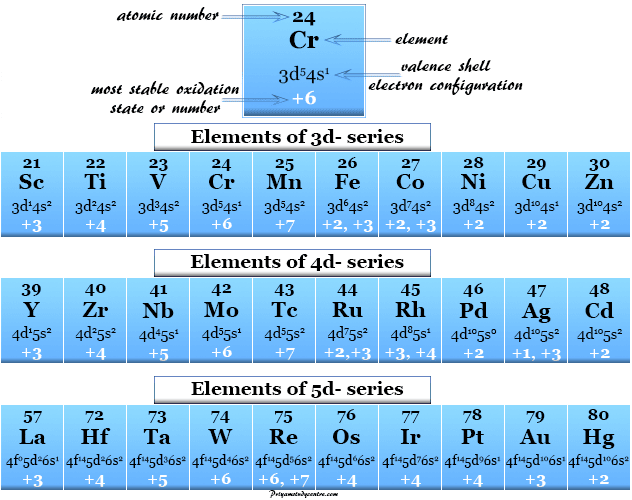
Ammonium On The Periodic Table
Oxidation number of an atom when an element has combined with the same element. Table: oxidation numbers of according to the atomic number, first 20 elements. Oxidation states of s block. Hydrogen. Alkali Metals - Group 1. Alkali Earth Metals - Group 2. Oxidation states of p block elements. Group 3. Group 4.
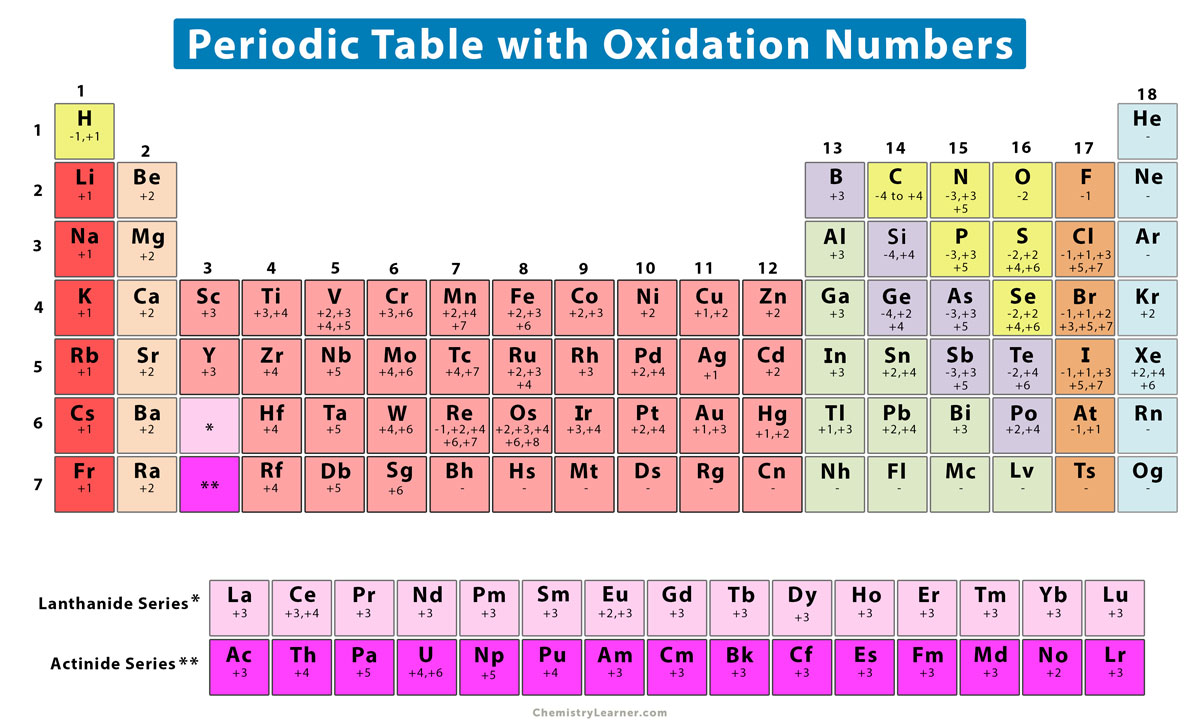
Oxidation Number (State) Definition, Rules, How to Find, and Examples
This printable periodic table contains the number, symbol, name, atomic mass and oxidation states of each element. The most common oxidation states are in bold text and predicted or unconfirmed states are in italics. This table is available for download as a PDF file and printed for offline use. For best printing, choose Landscape and 'Fit.
/PeriodicTableOxidation-BW-56a12da83df78cf772682bfe.png)
Periodic Table With Groups Numbers Periodic Table Timeline
Color of the element symbol shows state of matter: black=solid: white=liquid: red=gas: grey=unknown

Oxidation Numbers Periodic Table Elements
Interactive periodic table showing names, electrons, and oxidation states. Visualize trends, 3D orbitals, isotopes, and mix compounds.. 3D orbitals, isotopes, and mix compounds. Fully descriptive writeups. Periodic Table of Elements. Properties Electrons Isotopes Compounds. or buying a poster or wallet card, order number. 1H Hydrogen 1..
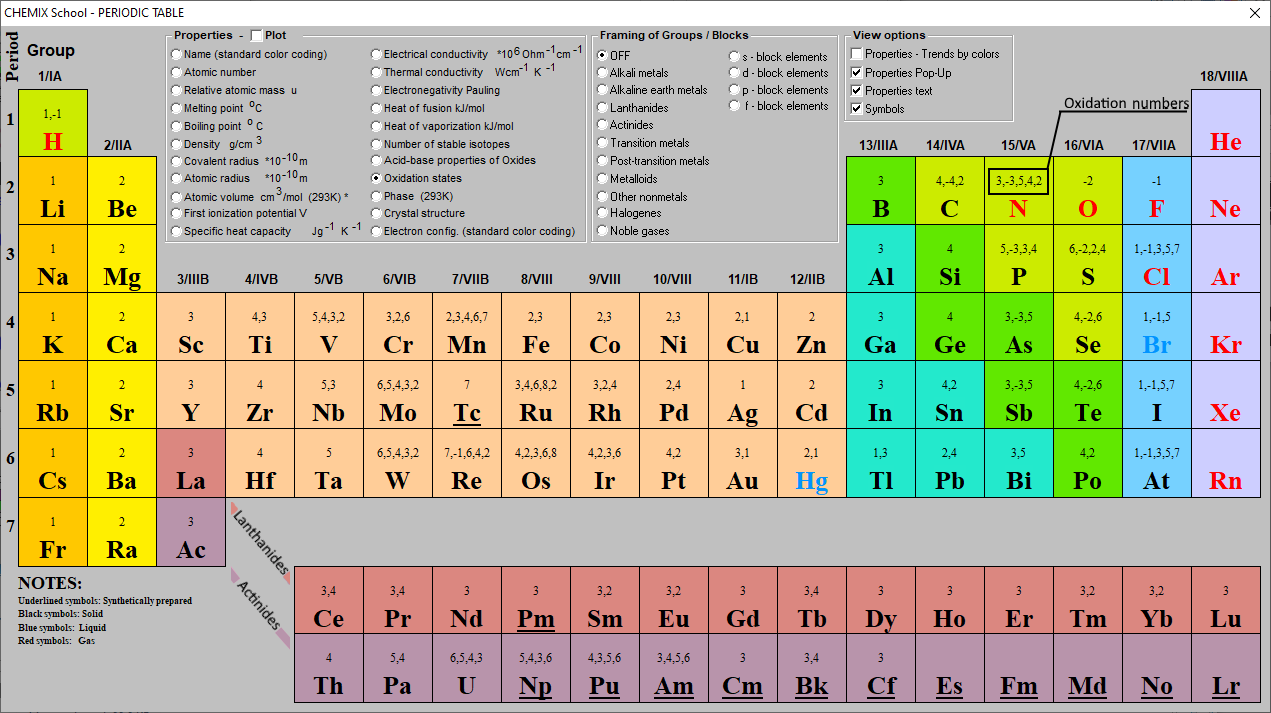
Oxidation Numbers Periodic Table Elements
This black and white printable periodic table chart is an updated version of the Printable Periodic Table - Element Charges. Each element cell contains the atomic number, symbol, name, atomic mass and most common valence charge or oxidation state of each element. The table is available for download in PDF format for offline printing. For best.
:max_bytes(150000):strip_icc()/PeriodicTableOxidation-BW-56a12da83df78cf772682bfe.png)
Periodic Table of the Elements Oxidation Numbers
However, most metals are capable of multiple oxidation states. For example, iron common has an oxidation number of +2 or +3. Halogens, on the other hand, have an oxidation state of -1. This periodic table contains the oxidation numbers of the elements as well as element numbers, symbols, names, and atomic weights.
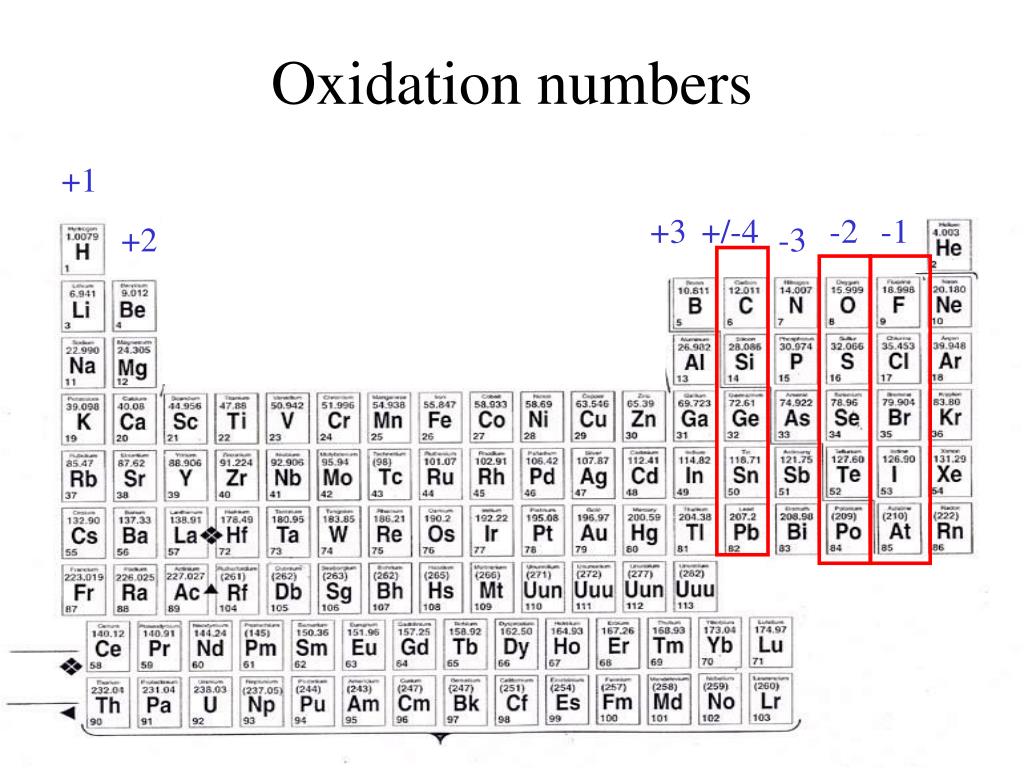
PPT Elements and Periodic Table PowerPoint Presentation, free
The oxidation number of potassium (K) and oxygen (O) are +1 and -2, respectively. KNO 3 is a neutral compound. Let x be the oxidation number of nitrogen (N). Therefore, +1 + x + (-2) x 3 = 0. Or, 1 + x - 6 = 0. Or, x = +5. The following image shows a chart consisting of the oxidation numbers of the periodic table elements [7].

How to Assign Oxidation Numbers
The positive oxidation state is the total number of electrons removed from the elemental state. It is possible to remove a fifth electron to form another the VO+2 VO 2 + ion with the vanadium in a +5 oxidation state. Each time the vanadium is oxidized (and loses another electron), its oxidation state increases by 1.

Free Printable Periodic Tables (PDF and PNG) Science Notes and Projects
This color periodic table contains the number, symbol, name, atomic mass and oxidation states of each element. The most common oxidation states are in bold text and predicted or unconfirmed states are in italics. This table is available for download as a PDF file and printed for offline use. For best printing, choose Landscape and 'Fit' for.
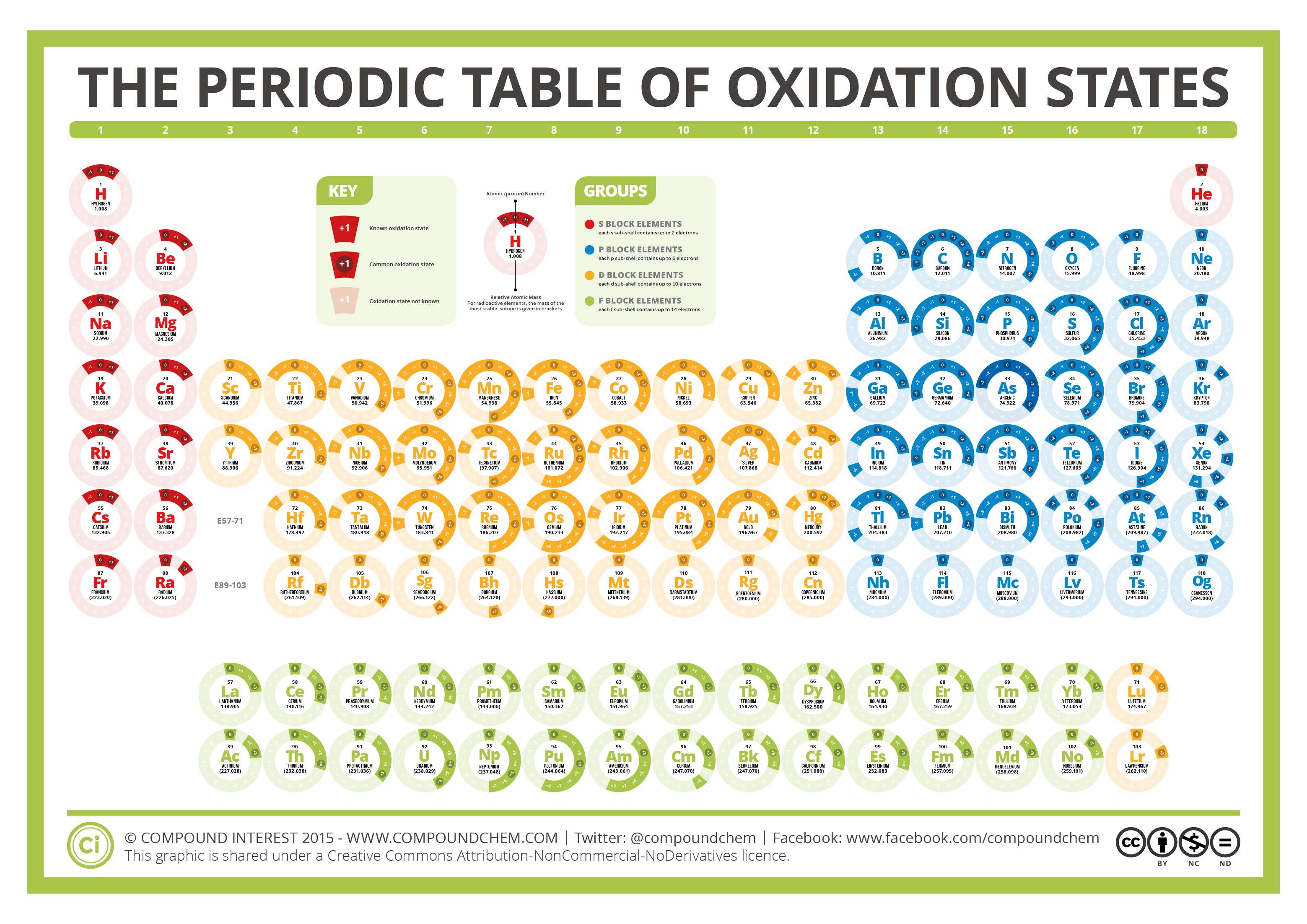
The Periodic Table of Oxidation States Compound Interest
Chemical Element Data in PubChem. PubChem is providing this periodic table page in order to help navigate abundant chemical element data available in PubChem. When exploring the table or list views on this page, please note the links to dedicated pages for each element. These individual element summary pages contain a lot of additional.

Downloadable Periodic Table Oxidation States
The oxidation number of a monatomic ion (by itself or as part of an ionic compound) is equal to its charge. Alkali metals - elements in the first column of the periodic table - will always have an oxidation number of +1; Alkali metals (column 2) are almost always +2

Downloadable Periodic Table Oxidation States
Po. +2. 85. At. -1. 86. Rn. The more common oxidation numbers are in color. The oxidation number +3 is common to all lanthanides and actinides in their compounds.
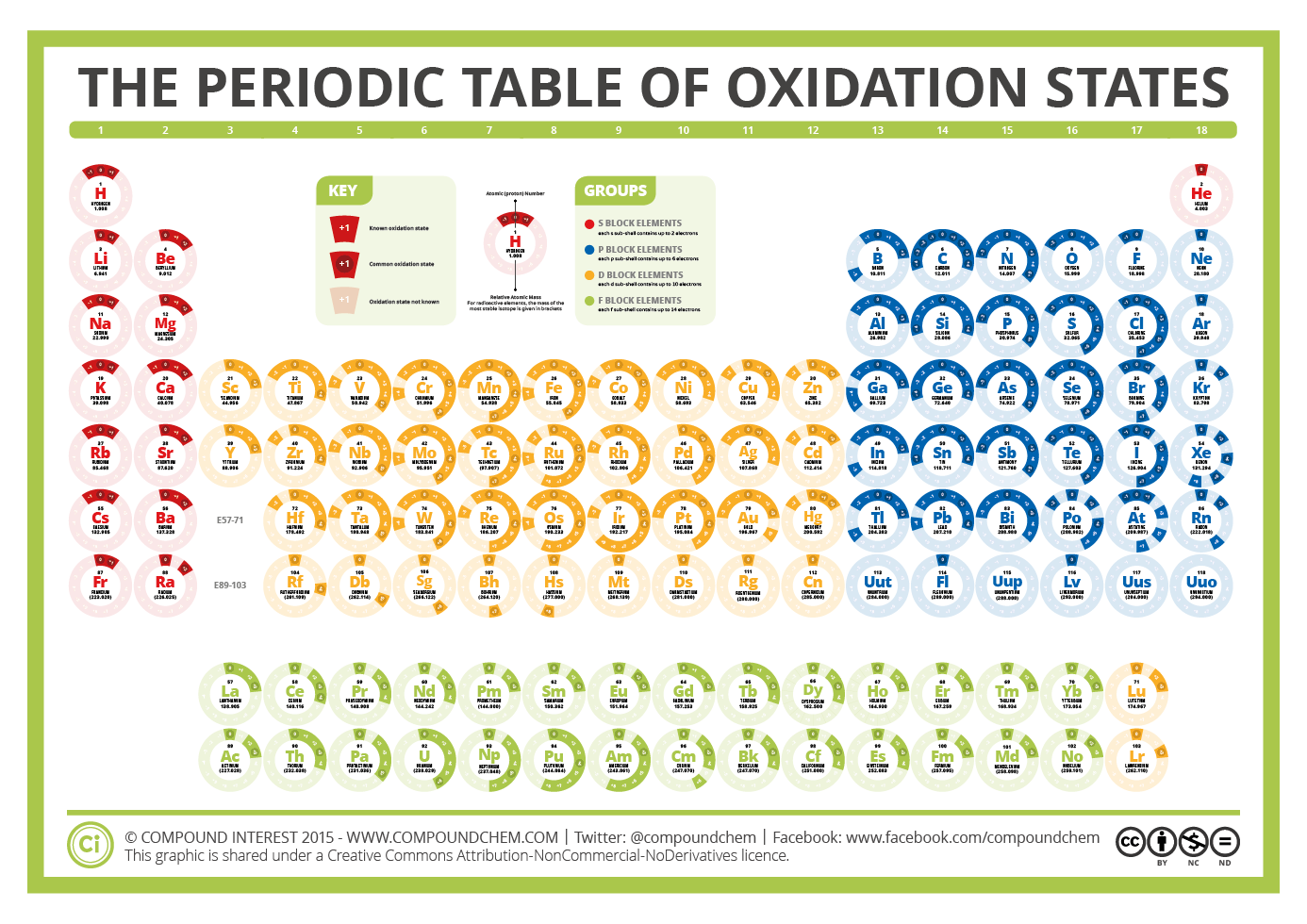
Compound Interest periodic table
Oxidation numbers; Monoatomic ions oxidation numbers; Polyatomic ions oxidation numbers; Periodic table with oxidation numbers; Steps to writing chemical formulas; Molecular and Empirical Formulas; Molecular mass and formula mass; Types of chemical compounds; Binary compounds; Ternary compounds
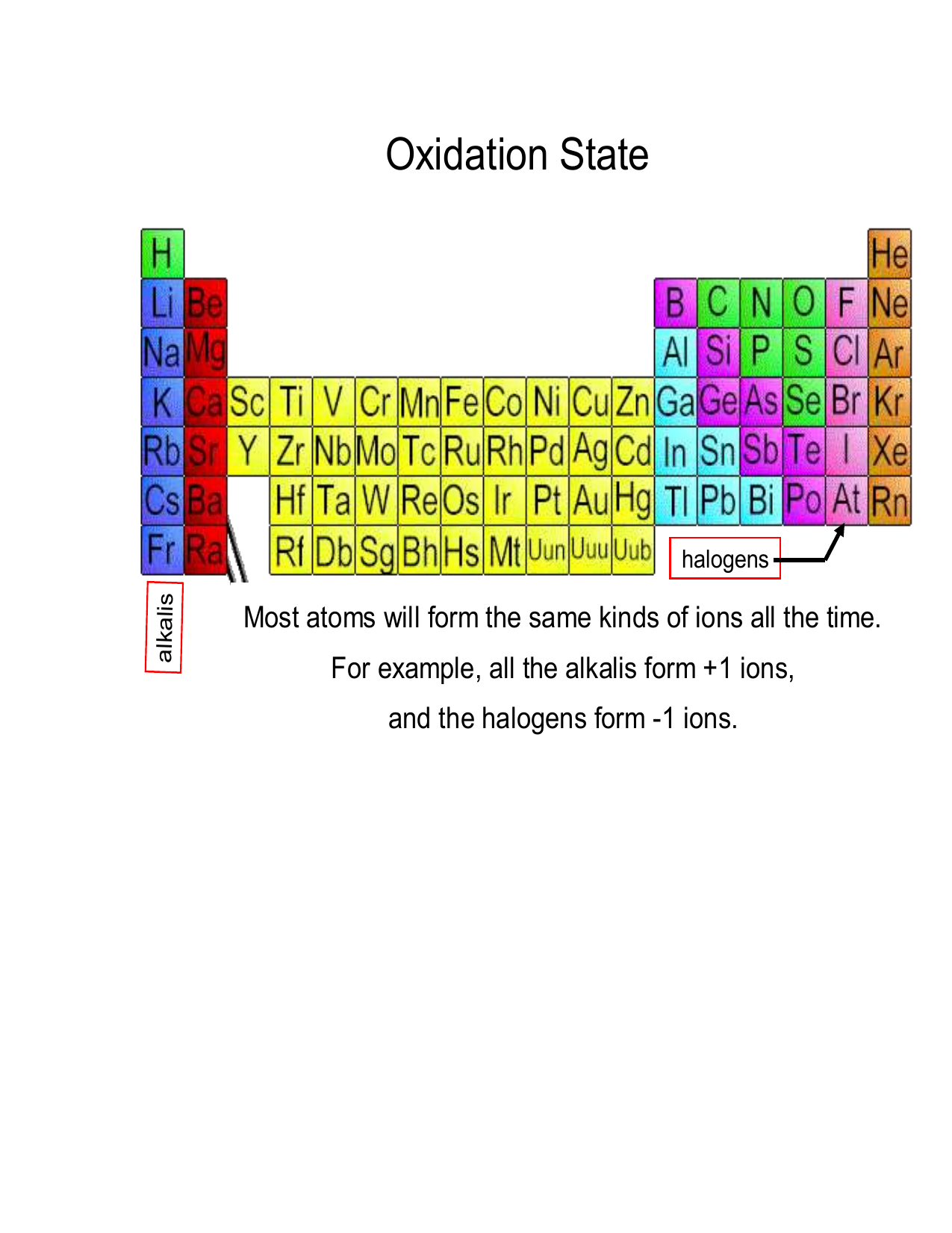
Oxidation Numbers
These have an oxidation state of +1, the same as the charge on the ion. Similarly, iron (Fe) can lost two electrons to form the Fe 2+ ion, or lose three electrons to form the Fe 3+ ion. These have oxidation numbers of +2 & +3 respectively. With a chlorine ion (a chlorine atom that has gained one electron, Cl - ), the oxidation number would be.
Printable Periodic Table With Oxidation Numbers Printable Word Searches
If oxygen is present, assume oxygen is -2. We created a video to explain how this is done. Rule 10 oxidation number examples: For example, in the nitrate ion NO 3-, the charge of the ion is -1. Then, using rule 2, we know the charge of the oxygens is 3 x-2 = -6. So nitrogen must have a charge of +5 to make the charge of the ion -1.